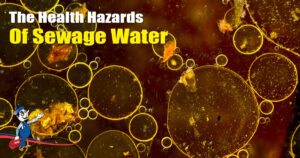What are the risks associated with an aging sewer system?
sewer system
The aging sewer system poses many risks for homeowners, from slow drains to flooding basements and even sewage spills. The good news is that you can reduce the risk of these problems by implementing routine maintenance and getting your lines replaced as needed.
Sewer lines break down over time due to age, shifting soil, thaw-freeze cycles, and damage from tree roots. When a line breaks, it creates a pathway for water and debris to flow into the home, which can result in clogs, backups, and serious structural damage.
Older pipes can also become corroded, leading to cracks that allow wastewater and sediment to seep through the pipe and into your home. This can lead to costly repairs, not to mention the health hazards associated with sewage in your home.

Every day, 1.3 billion gallons of wastewater leaves residential and commercial properties, travels through the sewer replacement system, then enters the environment and waterways. Unfortunately, our aging infrastructure has been pushed past its limits by increasing demands and changing conditions.
What are the risks associated with an aging sewer system?
The American Society of Civil Engineers reports that the nation’s 500,000 miles of sewer pipes are on average over 30 years old, and some are nearly 100 years old. With this much aging infrastructure, it’s no wonder that so many homes and businesses experience costly sanitary sewer backups and overflows.
Despite best efforts to maintain them, all plumbing systems will eventually need repair or replacement. It’s important to keep in mind that a sewer line doesn’t just run from your house to the street; it runs throughout your property, and all the fixtures and appliances within your home connect to it. For this reason, a problem with one fixture or appliance can quickly impact the entire system.
A major cause of aging sewers is that they were designed long before the need for wastewater treatment was recognized, and most older cities still use systems that drain both sanitary and stormwater into the same pipelines. During heavy rains, these systems can be overwhelmed by the volume of water and sewage that flows into them. When the sewage overflows into streets and waterways, it can result in massive clean-up costs and environmental damage.
Some communities have made improvements to their aging infrastructure, but the majority still struggles with combined sewer systems that are overflowing during rain storms. The EPA estimates that 10-17% of the country’s raw sewage leaks directly into the environment and groundwater from these systems.
While it’s impossible to completely prevent all sewage line failures, you can minimize the likelihood of a disaster by implementing proper plumbing maintenance and educating your family and employees about what shouldn’t be put down the drain. For example, grease should be poured into a heat-resistant container and disposed of properly after it cools, not down the drain or the sewer line. Likewise, paper towels, disposable diapers, hygienic wipes, and feminine products should not be flushed down the toilet, as they can cause blockages that can clog both the property owner’s sewer line and the city main.